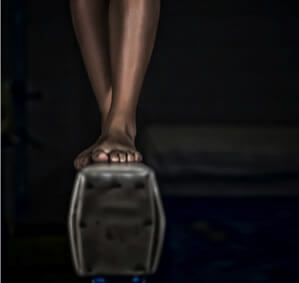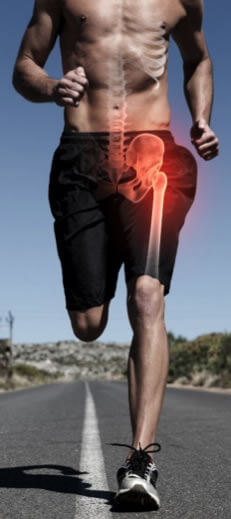
It may make sense to you that the foot and the knee are connected but have you ever thought about the connection between the foot and hip? Probably not. Many people wear orthotics to correct foot pain, or braces for their knees – some even end up with hip replacements.
What if there was a way to look at these three joints together and by doing so keep them all healthy and pain free?
In this post, I’ll focus on the foot. I don’t want to bore you with a lot of anatomy; let’s just say the foot has lots of joints, muscles and ligaments. It is a small surface area but it is meant to constantly act as a spring for the entire weight of the body. This is a big job. Correcting your stance and foot placement can have instant effects up the leg. Let me back up and outline the walking cycle:
- Your foot hits the ground – usually heel first.
- It rolls from the outside arch to the inside arch and across the foot.
- It transfers weight as it rolls, and ends by pushing off of the big toe.
- While this is happening; the knee has to roll slightly to maintain balance.
- And the femur (the long bone in your leg) rolls forward in the hip socket.
If any part of this sequence isn’t working the other joints have to make up or accommodate for the missing movement.

This can cause a lot of tension and stress on the joint, leading to pain. For example, if you walk flat-footed and don’t push off through your big toe your hip will only go through a portion of its correct rotation. To accommodate this it shifts to the side, straining low back muscles and gluteal muscles and eventually wearing out the hip joint. This also affects the knee – when the hip goes out to the side instead of rolling through, the knee has to shear from side to side instead of rolling. This, in turn, can strain both inside and outside, stretching ligaments and leading to instability and possibly worse problems down the road.
So back to the foot
Generally speaking, the foot is made up of three arches: the medial, lateral and transvers. It is designed to act as both a springboard and shock absorber in walking. That is accomplished by having many small joints to transfer body weight through. And if the weight isn’t being correctly transferred – across the foot and forward – it goes up into the knee and hip.
Try this: straighten your leg; lift it slightly off the ground and fall into it without bending your knee or moving your foot. Feels uncomfortable, right?
Now imagine doing a much smaller variation of that with every step you take (which is what you are doing if you are walking poorly) and consider what that does to your joints. This can be from bad shoes, weak arches, injuries that were never fully addressed or bad posture and weight distribution.
There are three quick changes you can make to help protect your feet.
- Make sure you have comfortable, flexible shoes. If your shoes can’t bend, neither can your feet.
- Strengthen your arches
- Place your feet on the floor and try to lift your big toe up without raising your foot. Next, try the small toe. Do this with both feet.
- Do the reverse and plant your heel on the ground with toes slightly raised. Now try to flex your big toe, then your smallest toe. Do this with both feet.
- Get your feet worked on and make sure every joint is moving properly and aligned correctly – Rolfing is wonderful for this!

